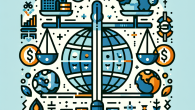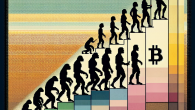
How Do China’s Capital Controls Actually Work in 2024?
H: How Central Bank Digital Currencies Are Reshaping Global Finance
The Dawn of Digital Sovereign Money
In the gilded halls of academia and the bustling corridors of central banks alike, a seismic shift is underway—one that promises to fundamentally alter the fabric of monetary policy, cross-border transactions, and fiscal oversight. Yes, dear reader, we are speaking of Central Bank Digital Currencies, better known as CBDCs. What once was the realm of speculative white papers and obscure conferences has now become the pet project of monetary authorities across the globe.
But what exactly are CBDCs, and why are they causing such a stir in international financial circles? Let’s remove the jargon and take a cogent stroll through why this quietly creeping innovation may very well be the most consequential monetary disruption since the abandonment of the gold standard.
What Is a Central Bank Digital Currency?
Put simply, a CBDC is a digital form of a country’s sovereign currency, issued and regulated by its central bank. Unlike cryptocurrencies such as Bitcoin or Ethereum, which operate on decentralized networks and are infamous for their volatility, CBDCs are tightly controlled and pegged to the national fiat currency.
Think of it as the crispness of legal tender, but without the germ-riddled paper and the need for physical wallets. CBDCs combine the legitimacy of state issuance with the convenience of modern digital payment systems.
Who’s Already on Board?
Oh, the list is growing like a central bank balance sheet post-quantitative easing. According to the Atlantic Council’s CBDC tracker, over 100 countries are currently in various stages of CBDC exploration. Some notable examples include:
- China: Already piloting the e-CNY in several provinces with hundreds of millions of users.
- Sweden: The Riksbank’s e-krona is progressing steadily but cautiously, befitting an institution with 350 years of central banking under its belt.
- Bahamas: A shining pioneer, having fully launched the Sand Dollar in October 2020.
- European Central Bank: Developing the digital euro with a design phase expected to conclude by 2025.
As for the United States? Well, let’s just say the Fed is “looking into it” with all the urgency of a tenured professor revising an 800-page dissertation.
The Macroeconomic Implications
The Policy Toolkit Gets an Upgrade
Monetary policy transmission historically resembles something akin to steering an oil tanker through fog. Interest rates go down—eventually, hopefully—spending and inflation go up. CBDCs could enhance the speed and precision of this process. Imagine a scenario in which stimulus payments are immediately deposited into every citizen’s central bank wallet, perhaps even with programmable conditions (e.g., spend within 30 days or it vanishes). The mind boggles, doesn’t it?
Bank Disintermediation: Friend or Foe?
Commercial banks are understandably twitchy about the idea of CBDCs. If individuals and companies can park their money directly with the central bank, why ever maintain deposits at JPMorgan or HSBC? The result could be a disintermediation of the traditional banking sector, posing liquidity challenges and requiring careful design mechanisms like tiered interest rates or transfer caps.
Cross-Border Transactions: A Frictionless Ideal
CBDCs hold the tantalizing promise of streamlining international payments—a domain currently riddled with high fees, long settlement times, and opaque processes. Cooperation between central banks could allow for seamless cross-border money exchange, possibly marginalizing intermediaries like SWIFT and traditional correspondent banking networks.
Opportunities and Challenges
Financial Inclusion
CBDCs could significantly improve financial access for underbanked populations, especially in developing regions where mobile penetration exceeds banking penetration. A phone and a digital wallet could become the key to full economic participation. That said, this hinges on robust technological infrastructure and digital literacy—a tall order in many jurisdictions.
Data Privacy and Surveillance
Here lies the rub. A fully traceable digital currency could very well be Big Brother’s dream come true. Every transaction logged. Every purchase scrutinized. Hence, CBDCs must mirror cash’s anonymity to some extent, or run the risk of becoming an apparatus of financial surveillance. Balancing transparency and individual privacy will be paramount.
Cybersecurity and Operational Risk
The technological backbone of a CBDC must be nigh impenetrable. A major breach or system failure wouldn’t just be embarrassing—it could destabilize an entire economy. The stakes are stratospheric, which is why central banks are treading carefully, often engaging with private sector partners to bolster security protocols and scalable architecture.
CBDCs and the Future of the Dollar
Of particular geopolitical interest is the potential impact of CBDCs on the primacy of the US dollar. If China’s e-CNY becomes widely accepted in trade corridors across Africa, Latin America, or even parts of Europe, we could see the very beginning of a slow erosion of dollar hegemony. While this is unlikely to occur overnight—the depth and trust in US capital markets remain unmatched—it’s a development worth keeping an eye on.
Dr. Whitmore’s Prognosis
So where do I, your ever-curious and occasionally cantankerous economic observer, stand? CBDCs are no panacea. They are tools, and like any instrument, their utility depends entirely on design and execution. The potential is astounding—but so are the pitfalls. Policymakers, in their well-intentioned haste, must avoid turning CBDCs into vehicles for social engineering or tools of fiscal coercion.
The world is entering a new chapter. Sovereign money is moving into the cloud, and with it, the very nature of trust in government-issued currency is being redefined.
Brace yourselves, dear reader. What lies ahead is not just a digital version of the old order—but perhaps an entirely new monetary system.
Final Thoughts
CBDCs are more than a technological curiosity; they represent a fundamental evolution of global finance. As with all great shifts, the ramifications will unfold over years, not weeks. Policymakers, economists, and private citizens alike would do well to understand what’s at stake—and to prepare accordingly.
For more insights into the rapidly moving world of macroeconomics, stay tuned to Financeone.









Leave a Reply